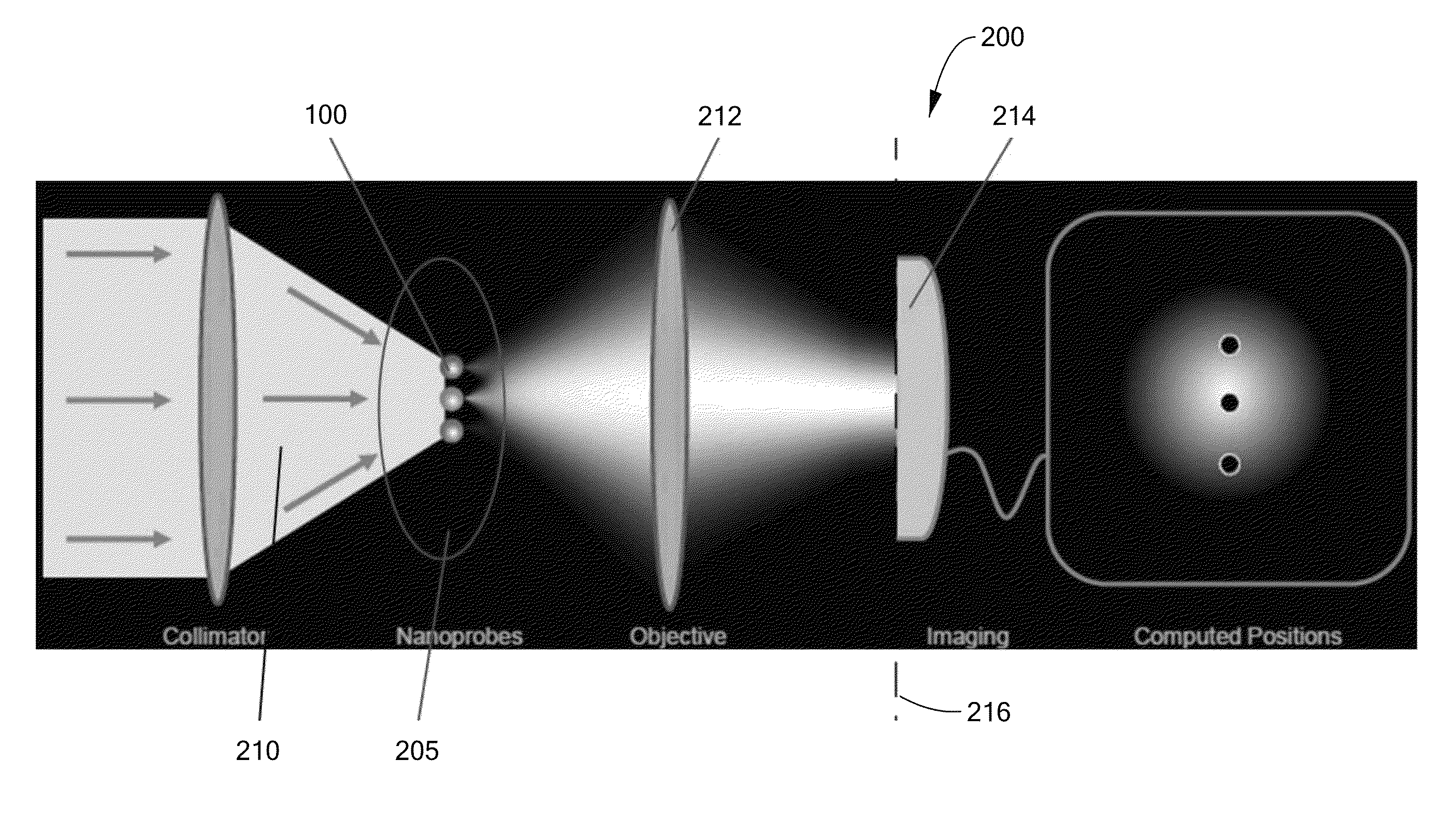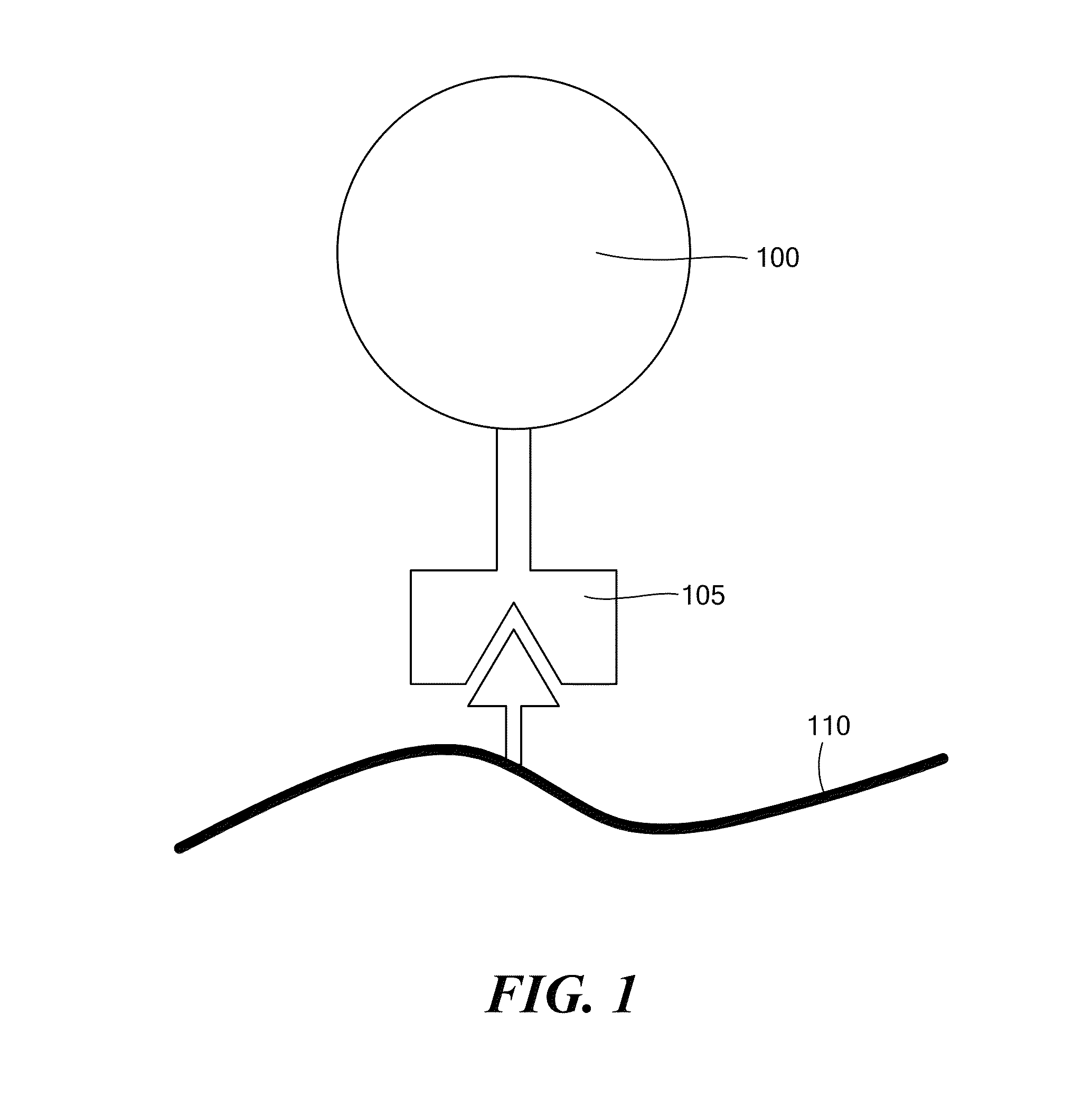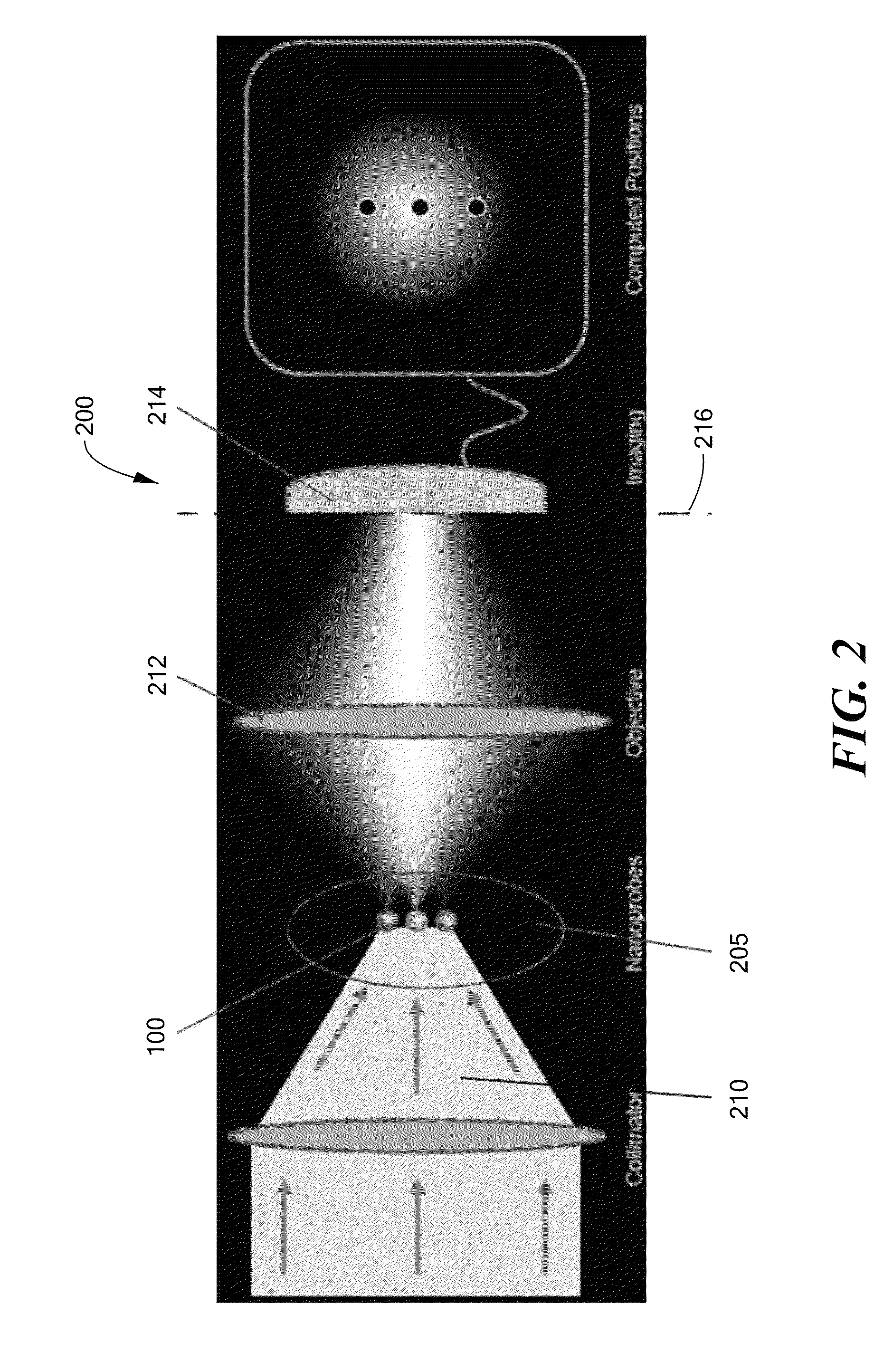Coherent optical mapping of particles
a particle and optical mapping technology, applied in the field of dynamical imaging systems, can solve the problems of reducing temporal resolution, increasing resolution, and requiring longer measurements,
- Summary
- Abstract
- Description
- Claims
- Application Information
AI Technical Summary
Benefits of technology
Problems solved by technology
Method used
Image
Examples
Embodiment Construction
[0007]In accordance with preferred embodiments of the present invention, methods and computer program products are provided for simultaneously mapping positions of a plurality of spectrally distinguishable nanoprobes with resolution greater than diffraction-limited resolution. The methods have steps of:[0008]a. illuminating the plurality of nanoprobes with an illuminating electromagnetic wave;[0009]b. detecting light scattered by the plurality of nanoprobes;[0010]c. spectrally associating scattered light with respective nanoprobes; and[0011]d. mapping, based on a single measurement, a position associated with each nanoprobe.
[0012]In accordance with further embodiments of the invention, the spectrally distinguishable nanoprobes may be linked to at least one specified analyte. The spectrally distinguishable nanoprobes may be microspheres. The step of spectrally associating may include projection of the total signal onto a spectral response of each nanoprobe at each of a plurality of p...
PUM
 Login to View More
Login to View More Abstract
Description
Claims
Application Information
 Login to View More
Login to View More - R&D
- Intellectual Property
- Life Sciences
- Materials
- Tech Scout
- Unparalleled Data Quality
- Higher Quality Content
- 60% Fewer Hallucinations
Browse by: Latest US Patents, China's latest patents, Technical Efficacy Thesaurus, Application Domain, Technology Topic, Popular Technical Reports.
© 2025 PatSnap. All rights reserved.Legal|Privacy policy|Modern Slavery Act Transparency Statement|Sitemap|About US| Contact US: help@patsnap.com



